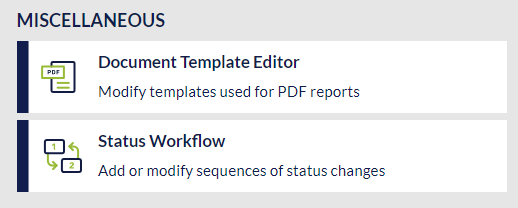How to Use Document Template Editor
Introduction
You can use the Document Template Editor to create a new template (either in the FieldFX Admin Tools or in ServiceMax DataGuide) or open an existing template.
|
To use the Document Template Editor in ServiceMax DataGuide, you must have the ServiceMax DataGuide package installed in your org. In ServiceMax DataGuide, you must be an Admin to use the Document Template Editor. |
You can use repeating headers/footers, pagination, and many other advanced formatting options. You can drag design elements to the design canvas and build your document template.
You can set up a custom button to convert a report HTML to a PDF.
For recent updates, see the Document Template Editor Admin Tool Release Notes.
With the Document Template Editor, you can:
-
Add and configure layout tables, Repeating Sections, data tables, and Signature Blocks
How to Access
You can access the Document Template Editor from:
| FieldFX AdminTools portal dashboard | ServiceMAX DataGuide in FieldFX Back Office | ||
|---|---|---|---|
|
You can either click Skip for now to continue to the editor or Migrate to start the migration process. |
Import XML from an External Template
Follow the steps in import the XML from an External Template.
Create a Template
Follow the steps in Create a Template.
Design a Template
Follow the steps in Design a Template.
Preview a Report
Follow the steps in Preview a Report.
